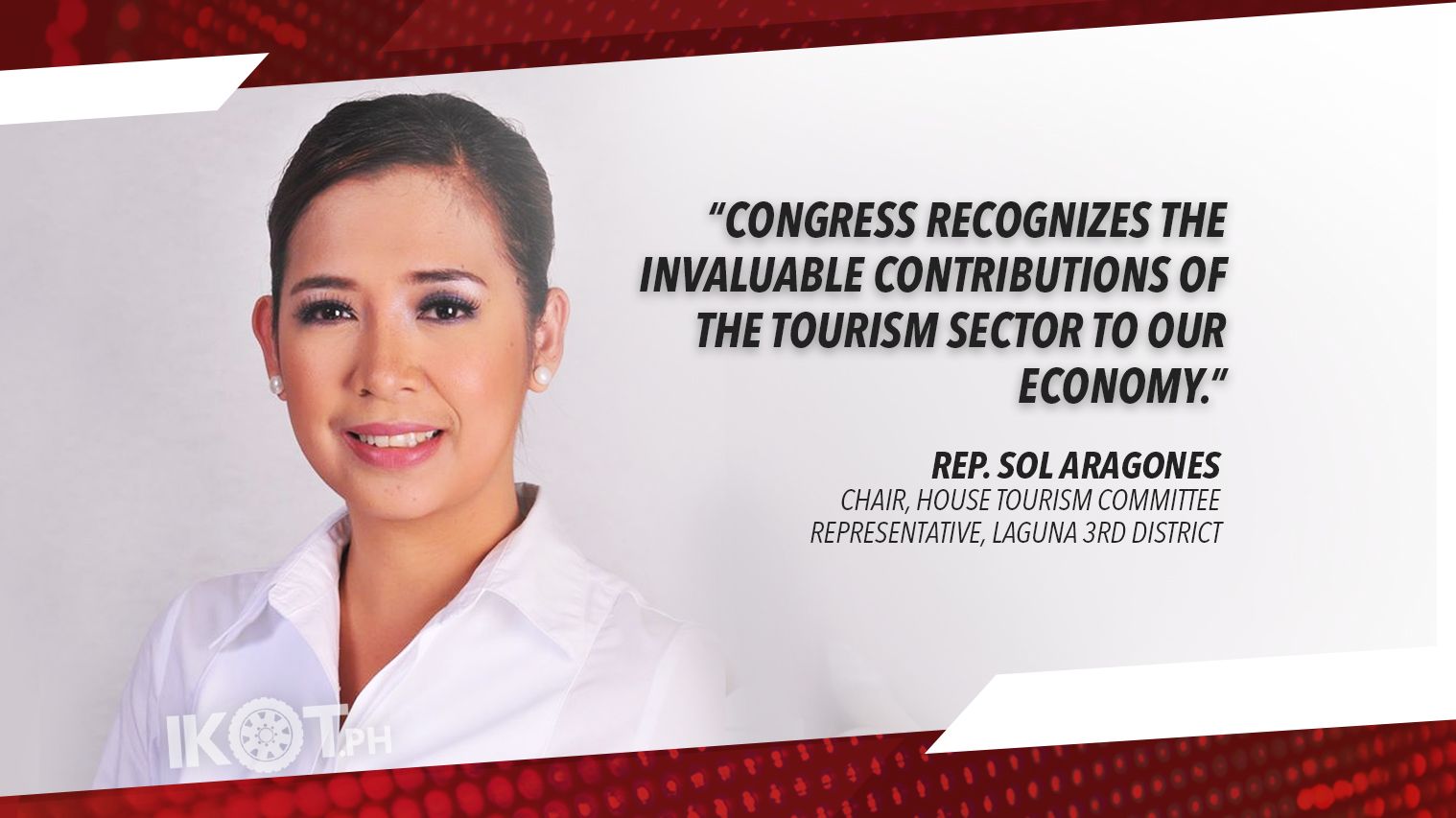House Tourism chair Sol Aragones clarified that the tourism sector will still have access to billions of pesos under the Bayanihan to Recover as One Act, or Bayanihan 2, and revealed on Friday that Congress had even set up meetings between tourism stakeholders and government financial institutions so that they could easily obtain loans to help them survive the adverse economic impact of the coronavirus disease (COVID-19) pandemic.
“Hindi po tinanggal ang working capital na assistance sa ating mga stakeholders; ito ay maaari pa din nila makuha sa 51 billion pesos na allocation para sa assistance sa mga government financing institutions,” said Aragones.
“Helping it (tourism sector) survive this pandemic is crucial if we want our economy to bounce back.”
The legislator from Laguna revealed that Congress even stepped in when it learned that the tourism industry stakeholders had encountered difficulties in obtaining loans from banks under Bayanihan 1.
According to Aragones: “Nalaman po natin na nahirapan silang mag loan sa mga bangko noong Bayanihan 1, at ayaw po natin na mangyari ulit ito sa kanila kaya naman tutulungan sila ng ating Kongreso.”
Aragones said that members of Congress on Tuesday met with members of the Tourism Congress of the Philippines (TCP) to explain that the 10 billion pesos allocated for tourism-related infrastructure projects under the Tourism Infrastructure and Enterprise Zone Authority (TIEZA) would not deprive the sector of access to financial assistance.
“Pinaliwanag po natin na holistic ang approach ng House version ng Bayanihan 2, at iginiit namin na yung loans naman ay ma-avail nila dun sa 51 billion-peso allocation to GFIs (government financial institutions). In fact, dahil dito, hindi lang limited to 10 billion pesos ang pwedeng makuha ng industriya,” stressed the solon.
“Kaya holistic ang approach ng Kongreso kasi bukod sa nais natin tulungan ang tourism stakeholders sa working capital, kasabay din nito ay ang paghahanda sa muling pagbangon ng industriya.”
The legislator pointed out that: “Hindi lang kalsada ang sakop ng inilagay na pondo para sa TIEZA; kasama na rin ang cellsites sa mga tourist destinations at pagpapaganda ng mga tourist spots na kinakailangan ayusin.”
“Investing in tourism infrastructure also has a multiplier effect.”
Another meeting involving tourism stakeholders, GFIs, and the government economic team will be set by Congress to iron out details to ensure that the tourism sector will be able to access the loans faster, on top of a 365-day grace period for loans that has been integrated into the House version of Bayanihan 2.
“Congress recognizes the invaluable contributions of the tourism sector to our economy, and understand that helping it survive this pandemic is crucial if we want our economy to bounce back,” said Aragones.
“We just want to assure the tourism sector na hindi po sila pababayaan, and want to make it clear that we are not funding tourism infrastructure at the expense of tourism sector financial assistance packages––lahat po yan may pondo. It is precisely because Congress recognizes the importance of the industry that it has provided all these funds for the sector.”
Investing in tourism infrastructure, added Aragones, also has a multiplier effect that not only helps the tourism sector in the medium and long-term, but generates employment and much-needed economic activity in areas that are dependent on tourism but have been severely affected by worldwide travel restrictions.
Data also shows that Tourism Direct Gross Value Added (TDGVA) to the Gross Domestic Product (GDP)––or the contribution of tourism industries to the Philippine economy––is estimated at 12.7%, a figure translates to 2.2 trillion pesos. The tourism industry is also responsible for employing 5.4 million Filipinos, or 13% of employment in the country.

